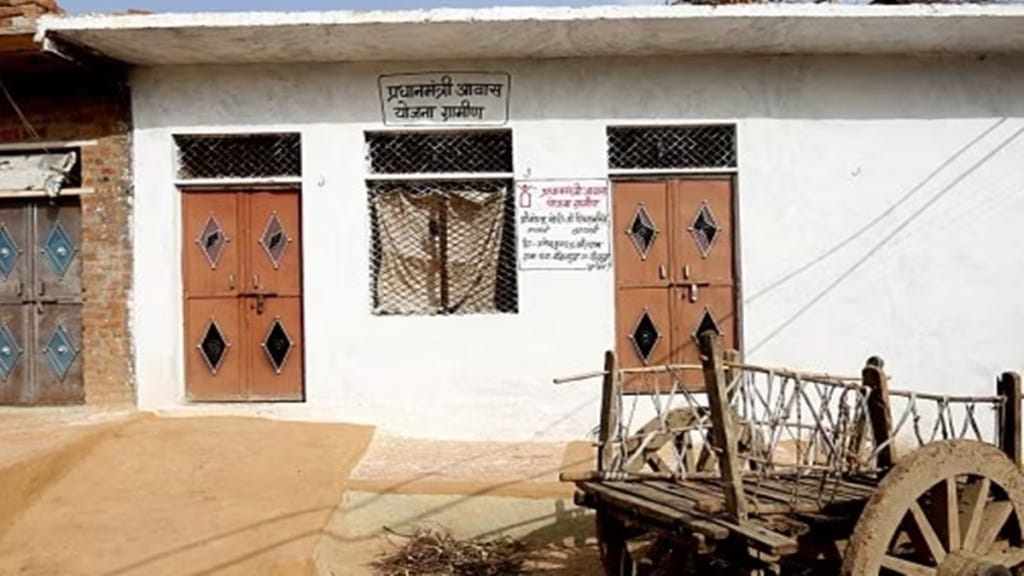Highlighting irregularities in the execution of the Pradhan Mantri Awas Yojana – Gramin (PMAY-G) in Madhya Pradesh, the Comptroller and Auditor General of India (CAG) has alleged that the state government provided Rs 15 crore in aid to over 1,500 ineligible beneficiaries, rather than granting it to more than 8,000 beneficiaries from the Scheduled Castes (SC) and Scheduled Tribes (ST) communities, reports The Indian Express.
Introduced in 2016, the PMAY-G scheme aims to make pucca houses available to those living in dilapidated houses in rural areas.
The CAG report, presented in the Madhya Pradesh assembly on February 8, scrutinizes the implementation of the scheme from 2016 to 2021. During this period, a total of 26,28,525 houses were sanctioned under the scheme, with beneficiaries receiving Rs 24,723 crore in assistance.
According to the report, 82.35 percent of the sanctioned houses were completed within the specified timeframe.
The CAG report highlighted a discrepancy where 2,037 beneficiaries in the 10 audited districts were found to possess two/three/four-wheelers before the sanction of a house, despite the scheme’s mandate to exclude households with such assets.
“We further noticed that CEO, JP (janpad parishad) released PMAY-G assistance of Rs 15.66 crore to 1,555 out of 2,037 ineligible beneficiaries,” the report stated, as quoted by IE.
According to guidelines, the SC, ST and minority communities are to be given priority in the beneficiary list, but the CAG, which audited 60 gram panchayats, noticed that “out of total 18,935 sanctioned cases, 8,226 beneficiaries superseded the more deprived beneficiaries in the priority list and were sanctioned house earlier than them”.
The CAG report revealed that the implementation and monitoring of the scheme relied on a web-based transactional electronic service delivery platform known as Awaas Soft. However, the scrutiny of Awaas Soft data highlighted certain discrepancies. Specifically, the report noted instances where the names of beneficiaries were not mentioned in 1,246 cases, yet benefits were still released in 950 of these instances.
It also flagged that there no system to alert in the portal to identify duplication of beneficiaries.

